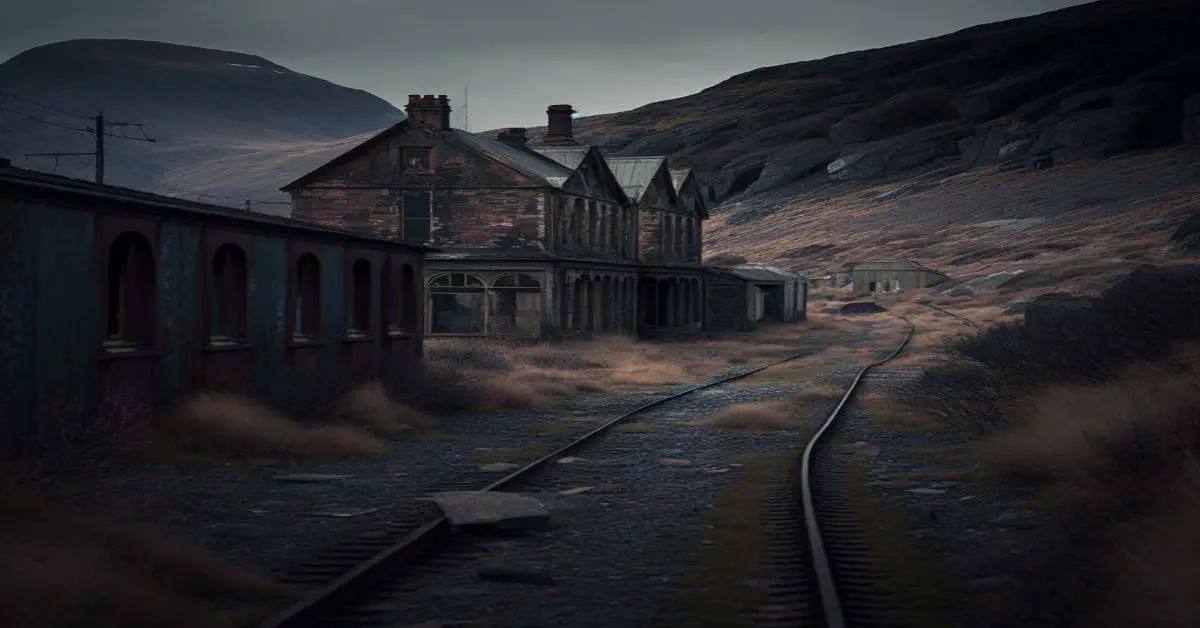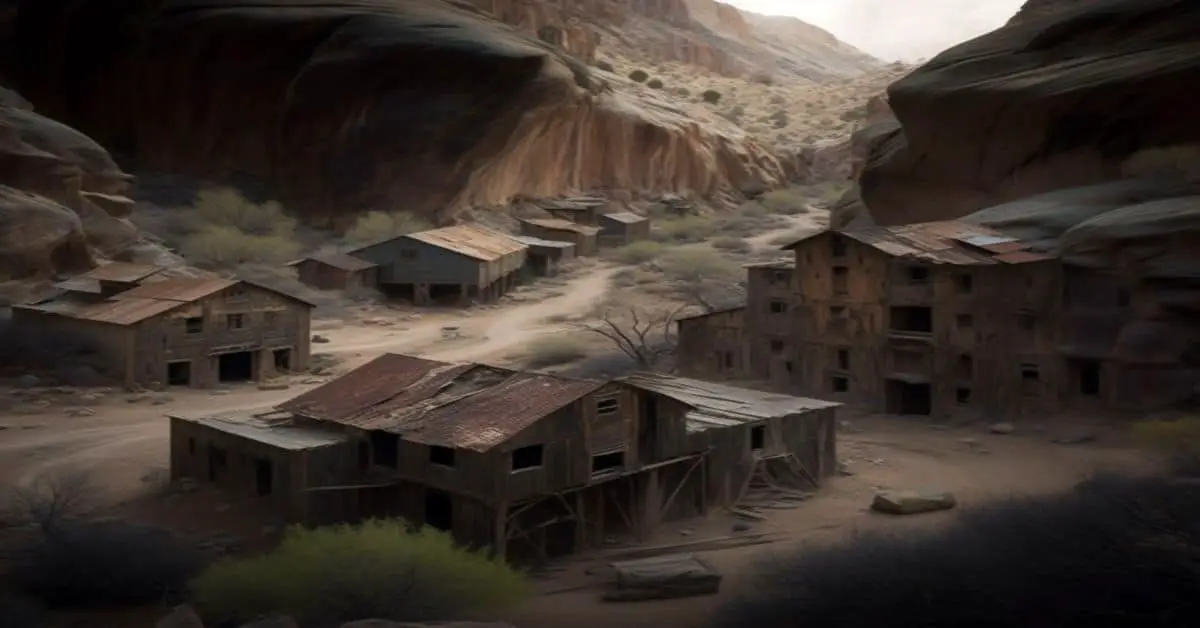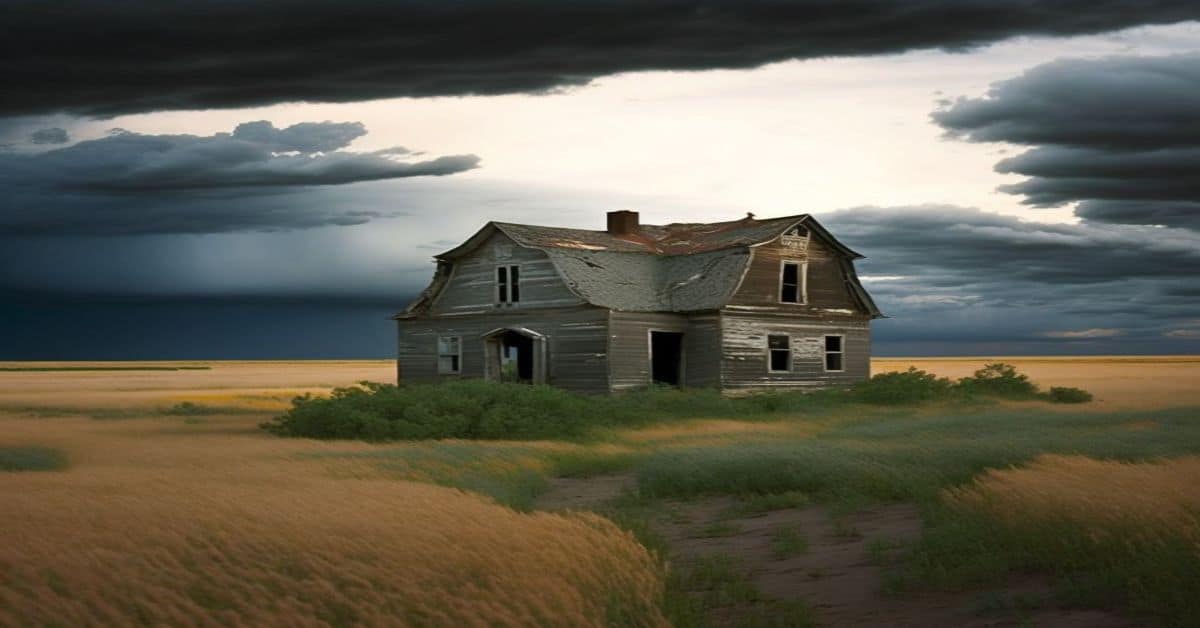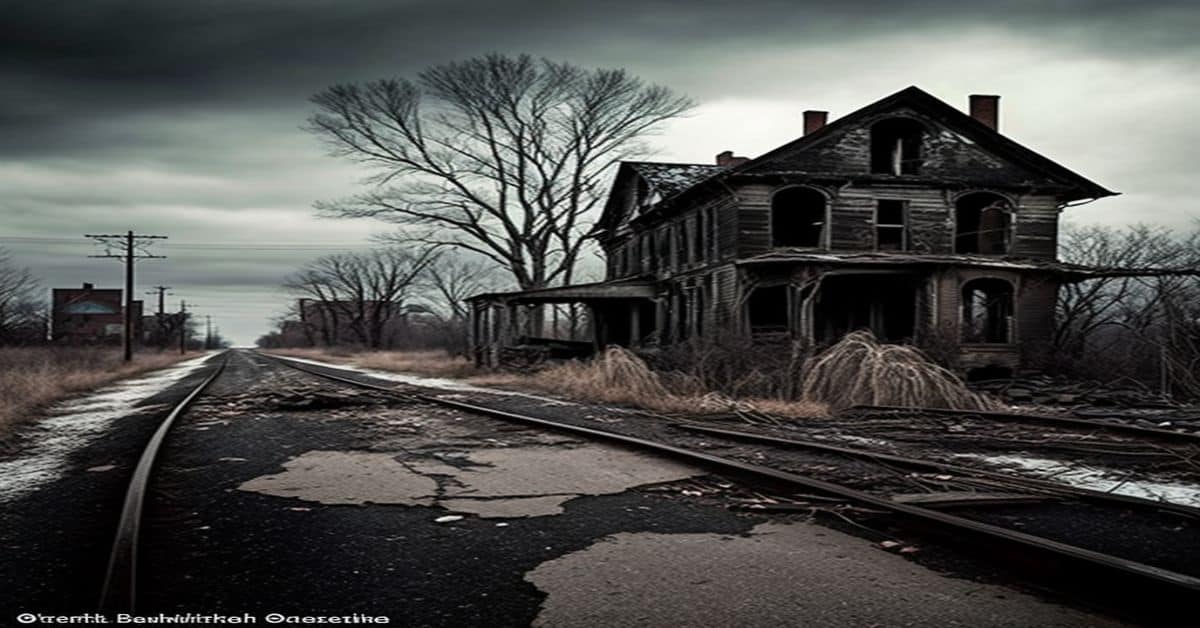If you’re looking for a ghost town to explore, Texas is the place to be. From eerie abandoned towns frozen in time to isolated communities long forgotten, these ghost towns will make your spine tingle.
Texas is a big state with a lot of history. And, like any other place with a lot of history, Texas has its fair share of abandoned towns. From the once-thriving town of Shafter to the mysterious ghost town of Terlingua, these towns offer a fascinating glimpse into Texas’ past. So pack your bags and get ready for an adventure!
Tumbleweeds roll across the desert of an abandoned ghost town as tumbleweed represents something that is out of place or left alone because it does not belong there. There are many reasons why towns become uninhabited. Still, in most cases, people move on with their lives, leaving behind everything they had built together and creating spaces known only through stories told by travelers who have passed through before them.
A world without humans would be one we know nothing about; these abandoned places tell incredible tales which help us understand what life used to look like differently than recent histories do.
These Texas ghost towns are a fascinating mark in the history of our Lone Star State, and often you can find so much preserved for visitors just passing through.
Abandoned buildings from years ago provide insight into how life was back then! If it’s antiques or old furniture that interests YOU most about yesterday, then check out any of these places – they’ve got something hiding around every corner.
If you ever want to jump back in time and get a glimpse 19th century Texas lifestyles, consider checking out these abandoned ghost towns near your location. Not sure which ones are closest? Here’s our list!
Glenrio, Texas
Route 66 is a famous road that links California with New Mexico. The National List of History Places has the historic district in its national register.
If you head out on Route 66 toward Glenrio, Texas, there are abandoned buildings from when farmers lived in this area and worked their land back before it became industrial or developed into what we know now about these times long ago.
The Grapes of Wrath movie was filmed at locations around these very same ruins- making them extra special for history buffs like me who love visiting places where great events took place.
The abandoned town of Glenrio in Texas is a perfect location for The Grapes Of Wrath movie because it has a historically rich landscape that can be seen throughout almost every scene.
Independence, Texas
If you’re looking for a unique way to explore the history of Texas, then Independence should be at the top of your list.
This ghost town was home not only to Sam Houston but also where his family made their fortune during the early 1800s as cotton traders and investors with technology transformed land through gradual changes that are still felt today.
Indianola, Texas
Indianola is located right off the Gulf Coast and is part of a package where it’s situated. This beach town has been ravaged by hurricanes multiple times over.
To some degree, it was almost more difficult to keep up with their agricultural sector due in large measure because so many disasters caused terrible damage.
Luckily enough, they still manage through these trying times even though most folks don’t see what goes on behind closed doors or within each others’ houses during hard storms like Hurricane Harvey (which hit them especially bad).
One particular hurricane in 1886 left the settlement destroyed – all that remains today are ruins scattered across an abandoned field where buildings once stood. The only thing left is the Zimmerman Cemetery.
Bluffton, Texas
In the late 1800s, James Buchanan purchased land alongside Bluffton to build his dream house.
He had seen what happened when other towns were left without sufficient water and wanted nothing more than for this area’s citizens to survive as he did after living through The Great Fire of 1871.
The town of Bluffton was once located along the banks of the beautiful Colorado River.
The structure expertly sifted water from its midst, ensuring that this small community would never face thirst or hunger again- at least until rising seas flooded everything away.
Even though they were safe during dry spells thanks to Buchanan Dam’s impressive workmanship.
Gilliland, Texas
Gilliland is a ghost town located in the Texas panhandle, originally known as Coyote.
It was renamed after John Gullyland, who served on behalf of Norwegian settlers during America’s westward expansion into Oklahoma territory.
Around 1900, this area became increasingly populated due to its location near rich oil fields that were eventually abandoned once production slowed down considerably following World War II.
The town never grew too large, nor had many people living there; only 200 remain today- a fraction compared with what it once had before fading away.
Catarina, Texas
The town of Catarina, established as a gateway for railroads in Texas 200 years ago, is now one of the semi-ghost towns. The locals have not consisted of more than 100 residents for at least the last 30 years.
Making it difficult to maintain an economy and community life because there isn’t enough water accessible.
The legend says the inhabitants named this community after one woman killed during some hold-up near what would become known as “the dot.”
Fast forward 200 years, and you’ll find yourself at least 30 miles outside anywhere else; there’s no population left but about 100 people living on their terms.
Medicine Mound, Texas
When settlers arrived in Texas, they found an abandoned Nawayee Indian village on the Medicine Mound reservation.
The land was sacred to Comanches, and it soon became their home after being driven from traditional grounds by white men who wanted more room for themselves than what could be found there.
Although today’s city barely has any people left (500 at peak), these four hills still stand as reminders of those days when this region wasn’t voids filled with concrete overpasses or gas stations near highways.
The Great Depression had struck hard on Medicine Mounds, but 1933’s fire ultimately resulted in its decline and eventual abandonment by settlers.
Eliasville, Texas
Eliasville is a small rural community in Texas, originally named after its founder in the late 1800s.
A farming and ranching town with some mills eventually led to an oil boom which brought about population growth for the area through most of this century until it hit rock bottom when both landmark buildings were destroyed by fire.
The cotton gin/flour mill also helped grow it quickly because, at that time, an oil boom was going on, making things happen all over again, but unfortunately, not long after, some buildings caught fire.
This left many people homeless, or without any belongings, they could salvage from their homes before fires finished off what little remained.
Other businesses declined due to a lack of business coming through, so eventually, residents had no choice but to leave.
Toyah, Texas
Toyah is a town full of history and charm. The first inhabitants were the Toyabe people. Wildfires had destroyed much vegetation previously utilized for food production purposes.
This led them to permanent villages near flowing springs like those found here to take advantage when freshwater became scarce due to irrigation practices.
The name means “flowing water” in Spanish and is named after the Toyayers who lived here before European settlers arrived on their land centuries ago.
While railroads were being constructed around this area during the construction of what would become known as “The Mother Lode,” – one can’t help but wonder if there are any connections between these two fascinating aspects.
Sherwood, Texas
Sherwood, Texas, is a ghost town that began as an elegant country seat in the late 1800s.
There are still ruins from when it was once prosperous, with a courthouse and post office established for privately run businesses and government operations.
Around 1,900 people started settling down towards Mertzon, which grew faster than Sherwood’s population, leaving behind jobs lost due to slow economic decline, leading to below 50 people.
Today it has grown to about 150, nearly tripling its lowest population. One day, it might grow into a populated hub again.
Barstow, Texas
George E. Barstow gave his name to this abandoned town in Texas and was an expert on irrigation systems and grapes.
He became famous at The 1904 World Fair for helping farmers grow more productive crops with all sorts of technologies he invented.
Including what is now known as “irrigation technology” has been crucial since it allows plants access to water even if there isn’t enough rain or snowfall every year.
This same year saw one such invention go wrong – a dam break that nearly flooded everything around it!
Today you can still see many public buildings left behind, including schools or private businesses, that were once thriving communities but now lie abandoned; nothing remains except memories trapped within these walls.
Lobo, Texas
Is anything more haunting than an abandoned town that once bustled with life? Lobo is just such a place, and you’ll find yourself frozen in time as soon after driving through its gates.
This small Mexican village served residents and travelers during America’s westward expansion into Texas soil over 200 years ago. Travelers wanted to take advantage of what was then seen by many as simply inaccessible, fresh drinking water.
Lobo is a ghost town along Highway 90 with an aging population of 15. The nearest place to load up on fuel and food before entering this arid part of Texas was nearby Van Horn, which got its name from the Mexican wolves that once populated Lubby’s land.
Now it sits more or less frozen in time like many other towns along America’s frontier where pioneers stopped for water during westward migration centuries ago.
Back in 1980, the entire town was on the market for sale for about $60,000. Finally, in 2021, three Germans purchased the town for $20,000 and are working on restoring it as a place for artists to be inspired.
Terlingua, Texas
Terlingua is a fascinating town that has been preserved for history. It’s home to many ghost-town attractions, including funky accommodations and an intriguing atmosphere, perfect if you’re looking beyond New York City or Los Angeles.
A recent influx in visitors from all over America means there are more chances than ever before on your journey through Texas campsite adventures.
Whether at Big Bend (where camping may seem like heaven) or along historic Route 66, where cowboys once roamed free. You will always find something new around every turn.
Most people there are dedicated to preserving its desert landscape, but they also want the city’s population to be small.
The annual chili cookoff celebrates spicy while providing free samples downtown during Coachella weekend-style events.



